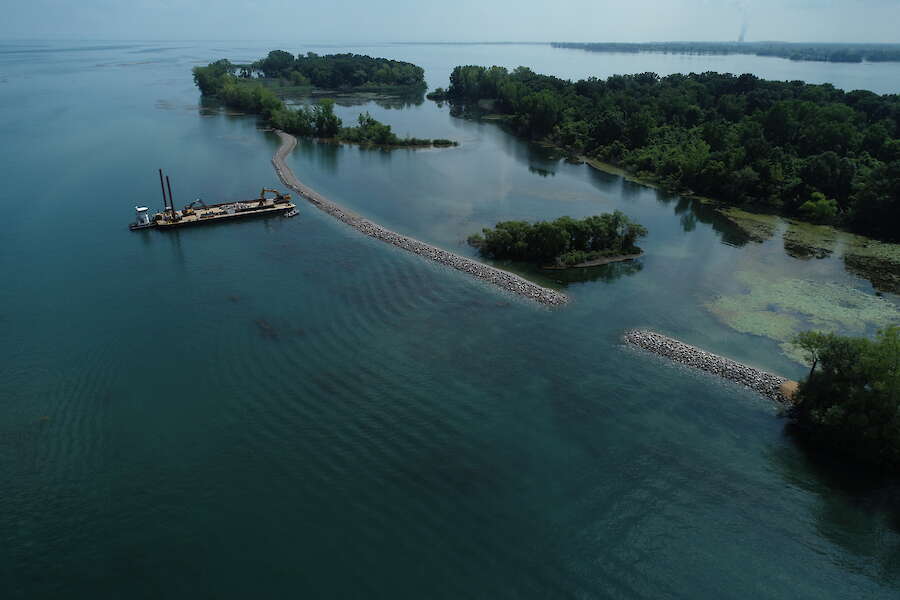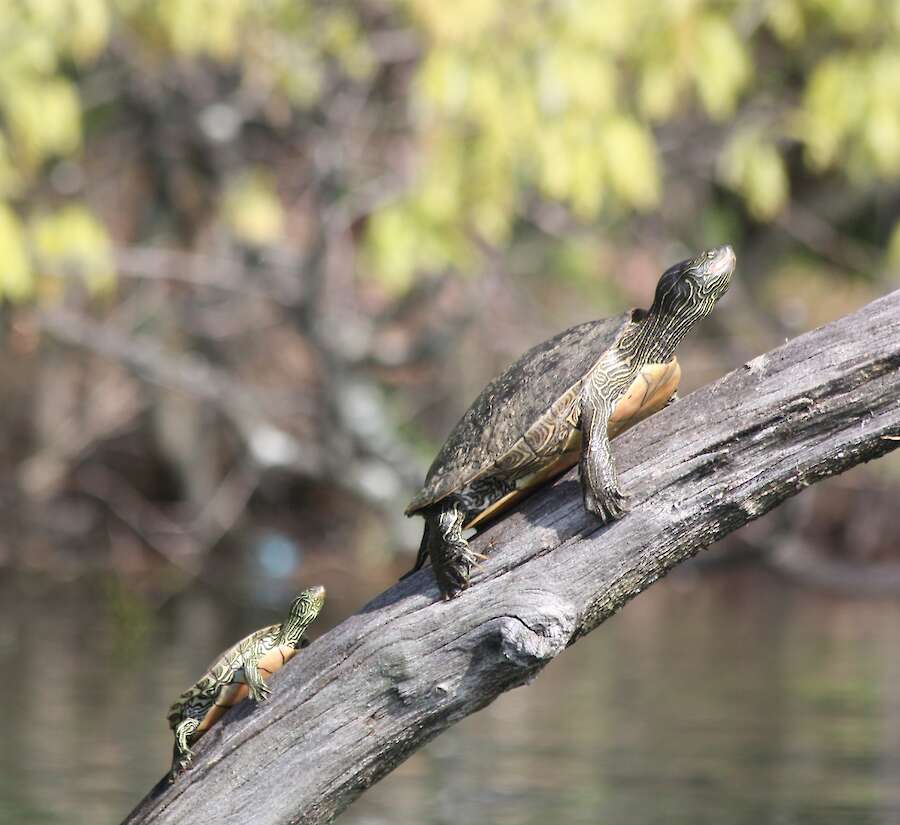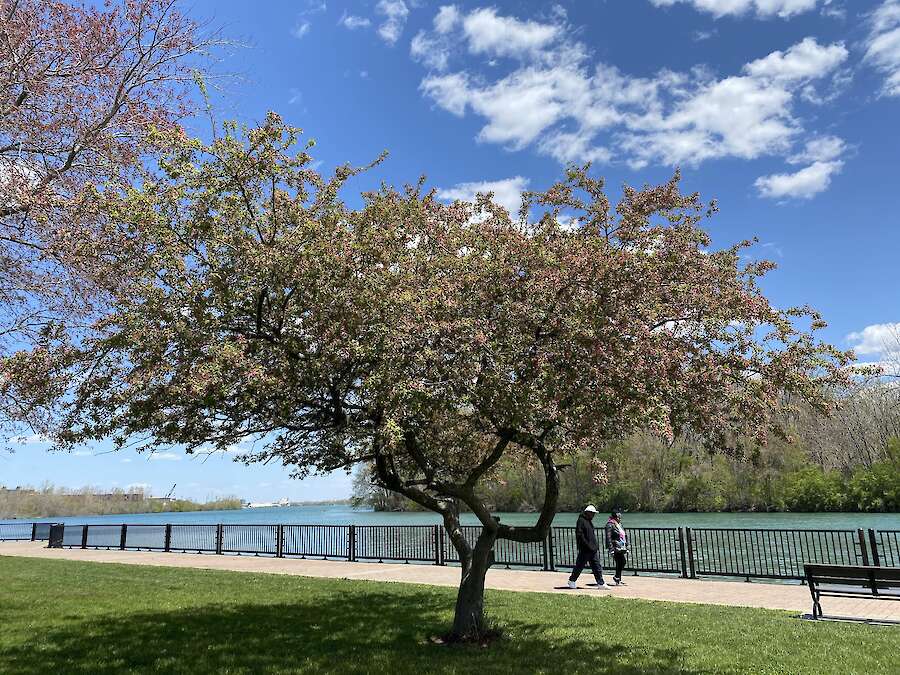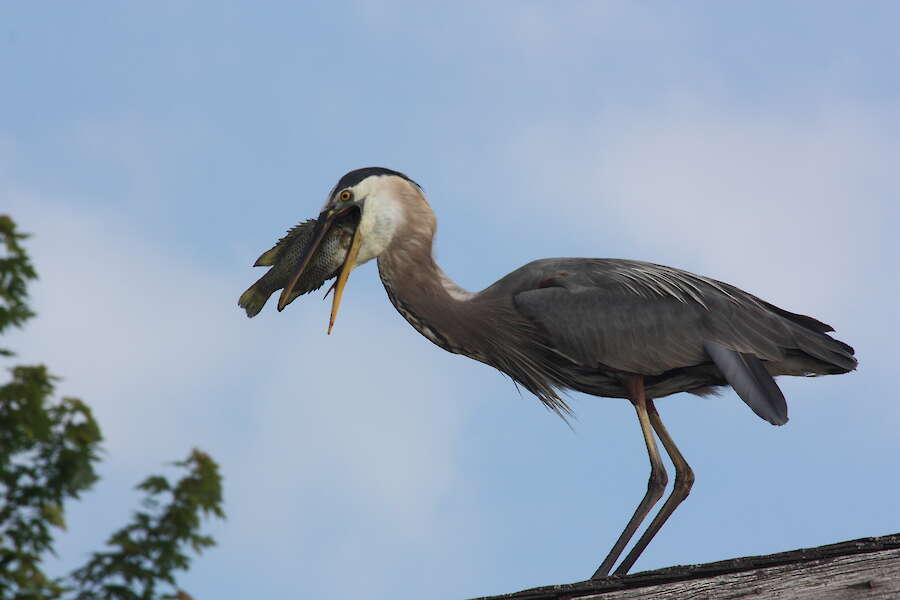Forty Years of Strong Restoration

In 1987, through an amendment to the Great Lakes Water Quality agreement, the Detroit River was designated an Area of Concern around the Great Lakes. This designation helped form the Detroit River Public Advisory Council (PAC), which is tasked to implement the Detroit River Remediation Plan. Since 2005, the Friends of the Detroit River (FDR) has been acting fiduciary for the Detroit River PAC. As part of the implementation, a list of over a dozen habitat restoration projects was created to address two of the river’s BUIs—the degradation of fish and wildlife populations and the loss of fish and wildlife habitat.
These projects include construction of fish spawning reefs, removal and reclamation of hardened shorelines, and re-establishment of natural vegetation and wetlands. Rocky shoals around the outer perimeter of some of the river’s uninhabited islands were also designed and constructed to reduce erosion and protect and improve existing coastal wetlands’ fish and wildlife populations. Progress in adaptation and restoration has improved water quality and will protect valuable natural resources in Detroit for decades to come. Setting and attaining conservation goals is no small feat in a heavily urbanized watershed, but great progress has been made.
Thriving Wildlife in Urban Landscapes

Belle Isle restorations are great for turtles!
Habitat projects on Belle Isle included restoration of Lake Okonoka, the South Fishing Pier, and Blue Heron Lagoon. These projects opened up the Blue Heron Lagoon and Lake Okonoka to the Detroit River, creating a calm spawning and nursery habitat for Great Lakes fish. The restoration covered over 280 acres and provided revitalized habitat for fish, amphibians, migrating birds, and wildlife within a dense urban area.
Collaboration is Key to Conservation

Working to improve water quality and public access to the water.
With years of urbanization, Ecorse Creek’s historical floodplain and wetland areas have been lost, and communities have become overburdened with environmental injustices. As a conduit of potential contaminated sediments, excessive stormwater and combined sewer overflow constituents, there is evidence that Ecorse Creek is impacting the water quality of the Detroit River at its discharge point, and in turn is impacting the ability to remove several of the Detroit Area of Concern Beneficial Use Impairments. FDR engages with communities to identify and implement projects that can be done to improve water quality and wetland habitat, reduce flashy flows and flooding conditions, address public access, and expand recreational opportunities within the Ecorse Creek watershed.
Fish Nurseries in the Lower Detroit River

More fish nurseries mean more food for the birds.
The Celeron Island, Sugar Island, Stony Island, and Hennepin Habitat Restoration projects created 12,740 linear feet of rock shoals that support vegetation and aquatic habitat, while protecting and promoting growth of 146 acres of backwater habitat—a calm, vegetated water zone suitable for fish spawning and nursery activity. Over 70 new habitat structures provide homes for fish, turtles, snakes, and amphibians. Access to the restoration site also greatly benefits birders, anglers, and hunters using the island and surrounding waters for recreation.
